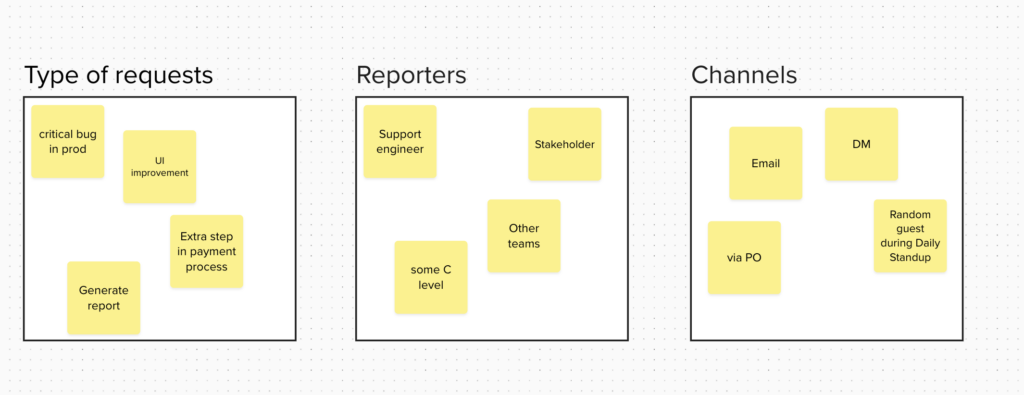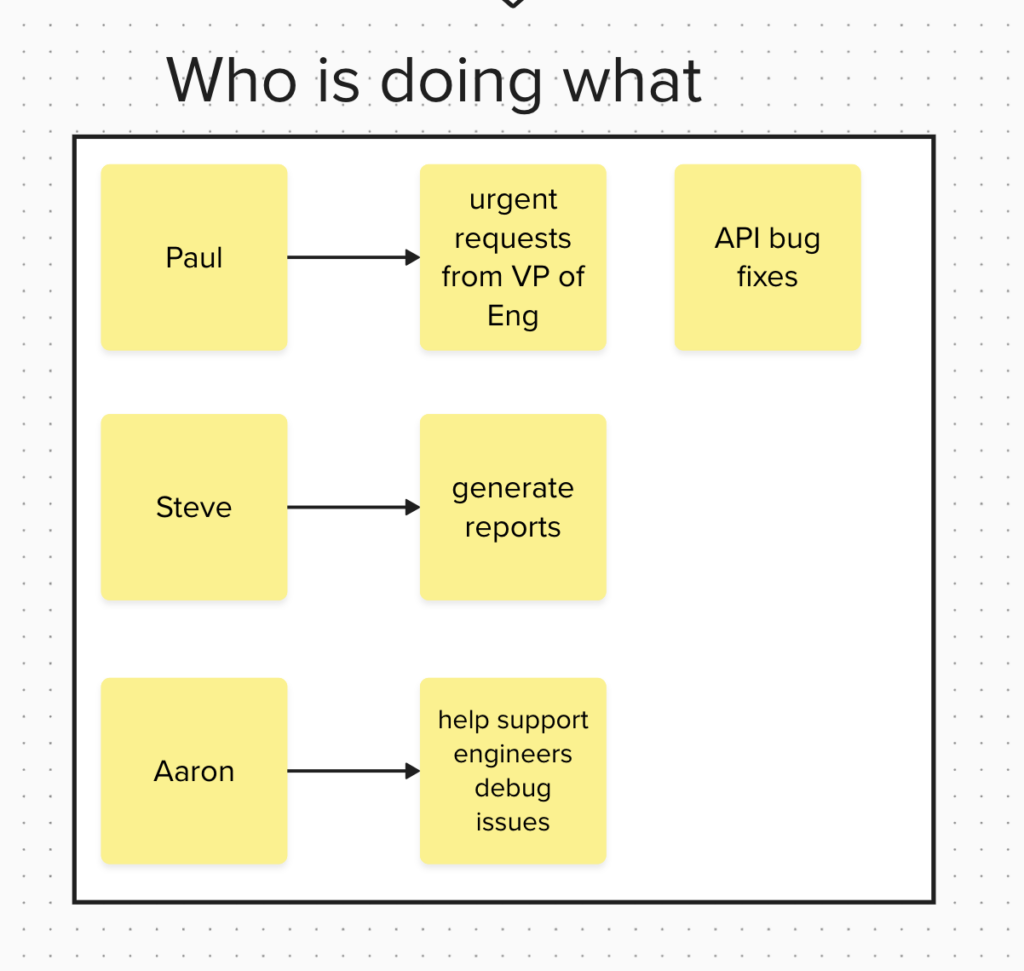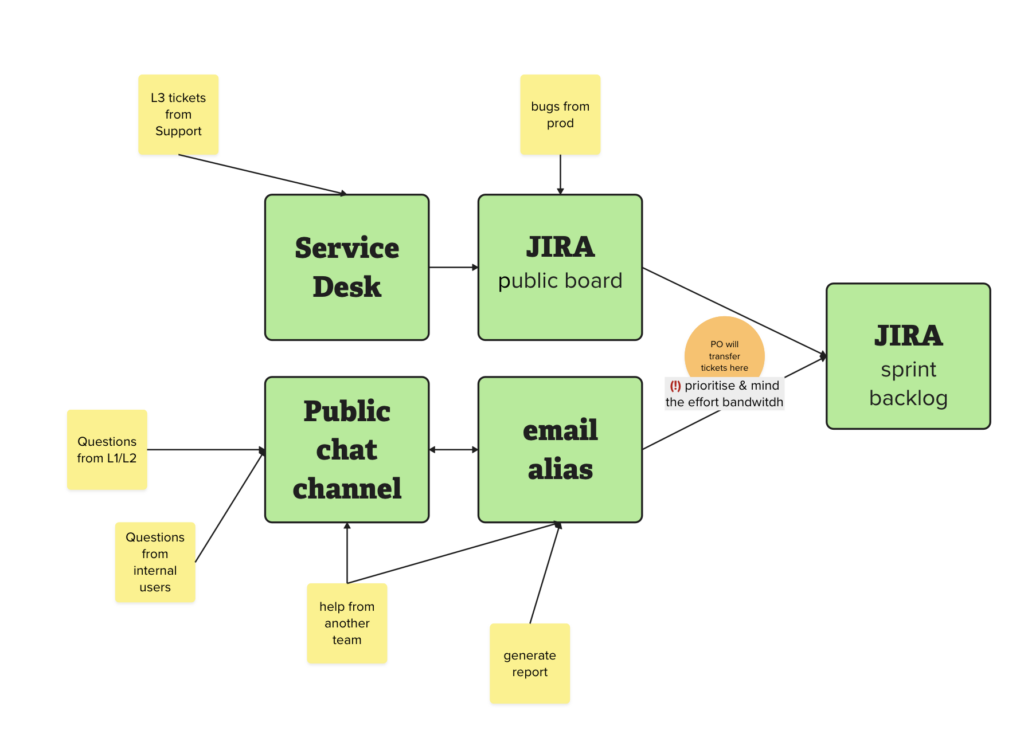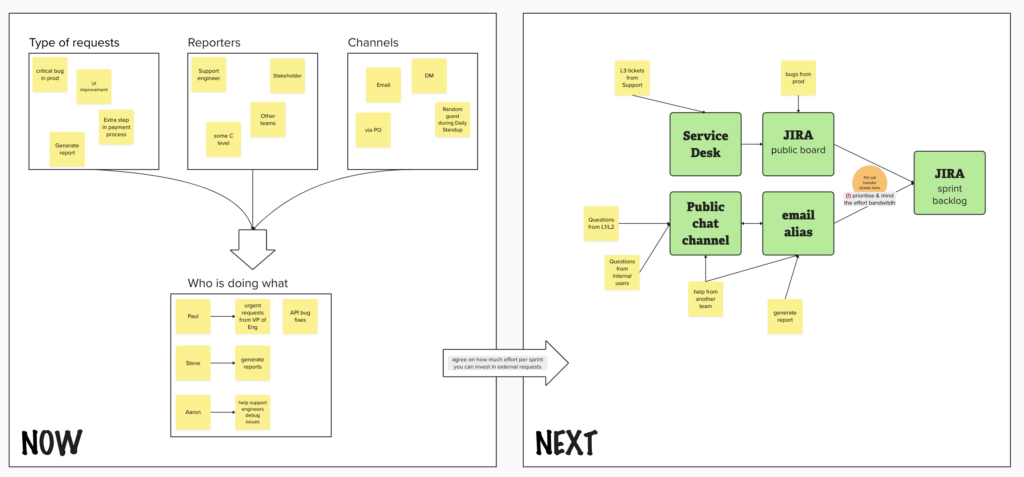One of the great advantages when choosing Scrum is working in Sprints. The purpose of a Sprint is to ensure consistent and predictable transformation of ideas into valuable outcomes by delivering at least one useful Increment within each Sprint, enabling the inspection of progress toward the Product Goal.
Also, the Sprint Backlog is a list of tasks for a Scrum team to achieve the sprint goal, one of the three Scrum artifacts. It often includes a sprint burndown chart, showing daily progress. Each Sprint Goal supports the release goal, defining the work committed for that sprint.
But what do we do when, due to reasons not necessarily related to the Scrum team, we have external requests that are sometimes so urgent that we have to resolve them during the Sprint?
Understand from whom and what requests are coming in

What I usually do is organize a mini-workshop with the team to understand:
Types of Requests
- Whether it’s an important bug in production, a suggestion for improvement, or the generation of an urgent report, an extra task during the sprint means distraction from the sprint goal, affecting velocity, and delaying the final release.
Who is Asking
- Sometimes it’s the support team, other times it’s an important stakeholder. Regardless of who is asking, the sprint goal must be protected, and no concessions should be made just because someone leverages their job title.
Which Channel
- Whether it’s email, direct message, or an external guest at the Daily Stand-up, it’s still a bad habit that hinders the timely delivery of the final product.
Understand how newly incoming tasks are distributed within the team

It’s important to understand if we have people specialized in solving certain problems, to identify if there are knowledge silos, or if there are personal preferences from external people when requesting help from the team. All these habits need to be broken and delegated to the team, not to individuals.
Educate and create healthy processes
Now that you have a clearer picture of these aspects (the types of requests, who initiates them, and through which channels), you should continue the exercise by grouping them and creating healthy processes through which these requests reach the team with a reasonable response time, without hindering the team from achieving their Sprint goal.
It is essential, based on historical data and the commitment received from stakeholders, to determine how much effort from the Sprint can be dedicated to these requests. For example, you can agree with the team and stakeholders that 15% of the Sprint can be dedicated to handling such requests.
In the end, your exercise should look something like this:

Here’s a summary of the steps:
1. Implement a Ticketing System (Service Desk)
– Set up an external Jira board with a detailed ticket template.
– Educate users to fill in requests thoroughly to minimize ad-hoc clarifications.
2. Establish Communication Channels
– Public Chat Channel: Rotate team members to monitor and respond.
– Email Alias: Managed by the PO to centralize communication.
3. Process Flow for Requests
– Log Requests: All incoming requests go into the product backlog.
– Prioritize: After prioritization, move requests to the sprint backlog.
4. Allocate Time and Resources
– Determine a fixed percentage of the sprint (e.g., 15%) to handle these requests.
– Ensure the team has a clear understanding of their availability for ad-hoc tasks.
5. Monitor and Adjust
– Track the impact of requests on the sprint.
– Adjust the processes as needed to maintain efficiency.
6. Evaluate if Kanban is More Suitable
– If ad-hoc requests remain high, consider transitioning to Kanban for better flow management.
By following these steps, you create a structured process for handling external requests, ensuring the team remains focused on their Sprint goals while maintaining flexibility to address urgent issues.

In the end, your exercise should look something like this:
Identify Types of Requests
- Critical production bugs
- Suggestions for improvements
- Urgent report generation
- Other urgent tasks
Identify Who Initiates Requests
- Support team
- Key stakeholders
- Other external sources
Identify Request Channels
- Direct Message
- Daily Stand-up invitations
Create Processes for Handling Requests
- Group Similar Requests: Categorize and prioritize requests.
- Designate a Response Team: Assign a rotating team or individual responsible for handling urgent requests during each Sprint.
- Set Clear Response Times: Establish acceptable response times for each type of request.
- Allocate Dedicated Effort: Agree on a percentage of the Sprint (e.g., 15%) dedicated to handling these requests.
- Educate Stakeholders: Inform all stakeholders about the new process and the importance of maintaining the Sprint goal.
Monitor and Adjust
- Track Requests: Keep a log of all incoming requests and their resolutions.
- Evaluate Impact: Regularly review how handling these requests affects the team’s velocity and Sprint goals.
- Adjust Processes: Make necessary adjustments based on feedback and data to ensure efficiency and minimal disruption to Sprint goals.
By implementing these steps, you can ensure that external requests are managed effectively without compromising the team’s ability to meet their Sprint objectives.



